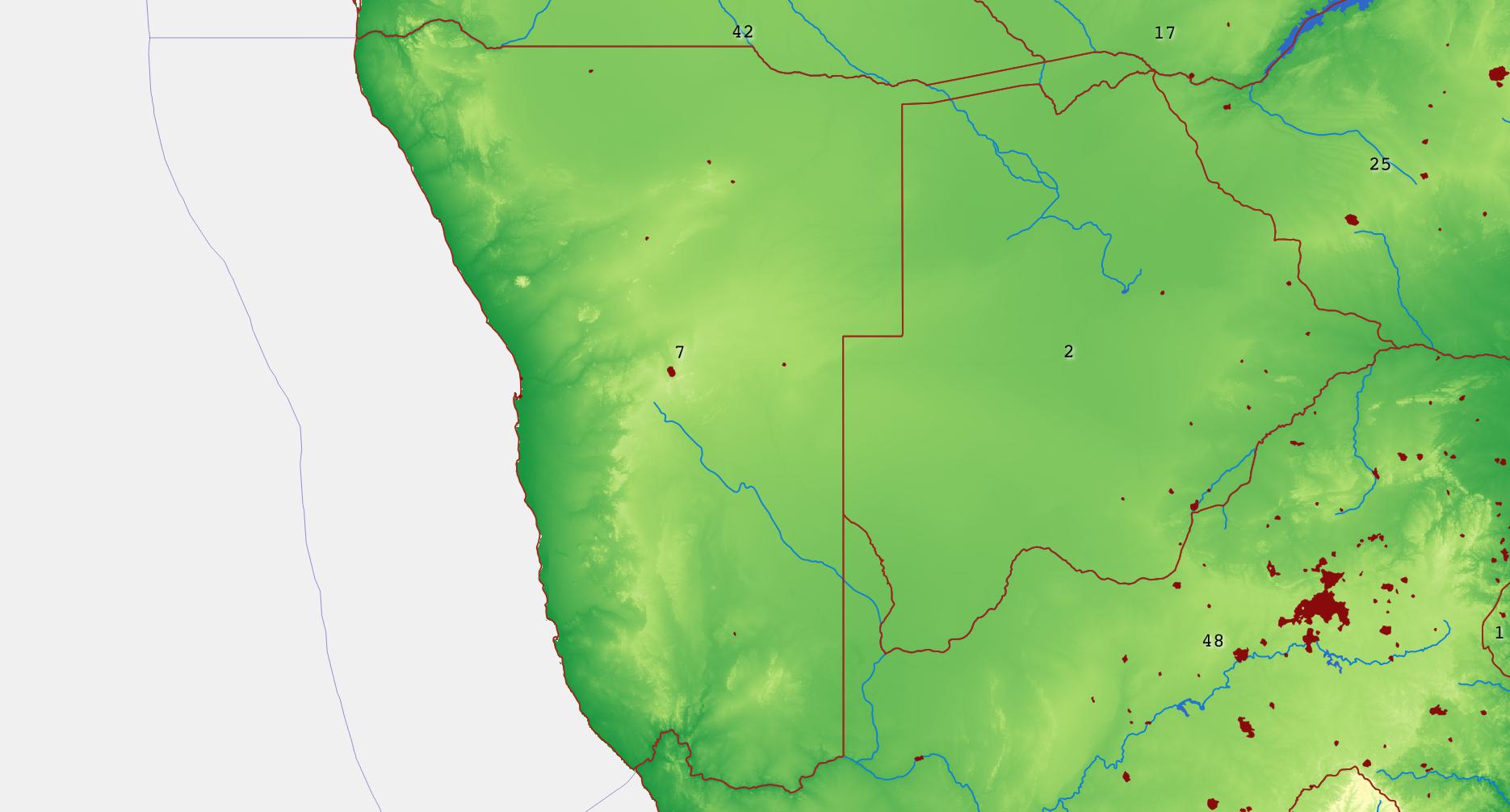 Earwigs of Namibia
Earwigs of Namibia
Earwigs - Dermaptera is their scientific name - are fairly common animals. Despite that or maybe because of that their biology has been rarely examined in detail. Engaged amateurs and professional biologist regularly searching for Dermaptera are rare, much in difference to other groups of organisms such as butterflies, moths, dragon flies and crickets.
That is even more embarrassing as earwigs do have very interesting characteristics. Very outstanding is the - present probably in all species - the brood care by the mother for eggs and first instar larvae. Furthermore the earwigs' flight capability poses an interesting problem. Some specimens of one species do fly and sometimes caught with light traps, while other specimens of the very same species cannot fly at all. A systematic recording of the flight capabilities would be scientifically interesting and feasible for amateurs, too, who could collect the important biological basis data.
In the Namibia, there is only a very limited number of species as far as is known. Unfortunately, the earwig fauna has been poorly studied so far which is reflected by the low number of records - 35 out of 21.000 - in my Distribution data base. Most species can be identified with good certainty with the following descriptions and photos. Worldwide about 2.200 species are known to science, and in the range of the Fauna Europaea, 83 species are recorded, in Australia it is 87 species, and India about 300.
An important task for amateurs would be to increase the number of records and - hopefully - increase the number of species. I am confident that there are more species especially in wetter locations.
The name 'earwig' is not quite understandable. Naturally earwigs do sometimes creep, such as into human ears, which they use as hiding place and retreat. Of course this happened more often in a middle age and rural society which was interlinked with nature - for the good or bad - more intimately than our present day urbane societies. Earwigs use human ears as hiding place that is all. However this is also done by other insects, as was reported by South African doctors who found all sorts of insects in ears. Amongst them were cockroaches, bugs , beetles- however: no earwigs (use keyword 'medicine' in the 'Keywords' database). So it seems not really logic too me to call especially this insect earwig.
Incidentally, there seem to be only two ways how to name the Dermaptera. It is either after the human ear, as in English, German, French and Russian. In other languages such as Japanese, Thai, but also Swedish, Spanish, Finish, Italian and Portuguese the name refers to the cerci, regarding them as scissors or pincers or tongs (more in my database 'Vernacular, Native or Common Names').
However you call them, earwigs never purposefully creep into the human or other animals ears' and never lay eggs there, and never builds nests there or penetrates to the brain to lay eggs.

There is, to my knowledge, no special treatment of the Namibian earwig fauna, however, following sources contain useful information.
Online Database of Living Namibia
Brindle A (1966) Notes on the Dermaptera in the Hamburg Museum. Entomologische Mitteilungen aus dem Zoologischen Staatsinstitut und Zoologischen Museum Hamburg, 3 (56): 127-141.
Brindle A (1966) The Dermaptera of the Naturhistoriska Riksmuseum, Stockholm, Part I. Arkiv för Zoologi, 14: 437- 447.
Brindle A (1973) The Dermaptera of Africa. Pt I. Annales du Musee Royal de l'Afrique Centrale Tervuren, Series no 8, Sciences Zoologiques, 205: 335 pp.
Hincks WD (1957) The Earwigs of South Africa. South African Animal Life, 4 (Chapter 2): 33-94.
Further, detailed information on the Nambian earwig fauna is available in the databases and in the link list.| Family | Subfamily | Species | Author | Common Name and Notes | |
| 1 | Anisolabididae | Carcinophorinae | Euborellia annulipes | (Lucas, 1847) | Ring-legged Earwig |
| 2 | Forficulidae | Forficulinae | Forficula auricularia | Linnaeus, 1758 | Common Earwig, European Earwig |
| 3 | Diaperasticinae | Diaperasticus erythrocephalus | (Olivier, 1791) | ||
| 4 | Labiduridae | Labidurinae | Forcipula gariazzi | Borelli, 1900 | |
| 5 | Labidura riparia | (Pallas, 1773) | Sandohrwurm, Uferohrwurm | ||
| 6 | Nalinae | Nala lividipes | (Dufour, 1828) | Black field earwig (name from Australia) | |
| 7 | Pygidicranidae | Pygidicraninae | Dacnodes separata | (Burr, 1908) | |
| 8 | Spingiphoridae | Spongiphorinae | Labia minor | (Linnaeus, 1758) | Small or Lesser Earwig |